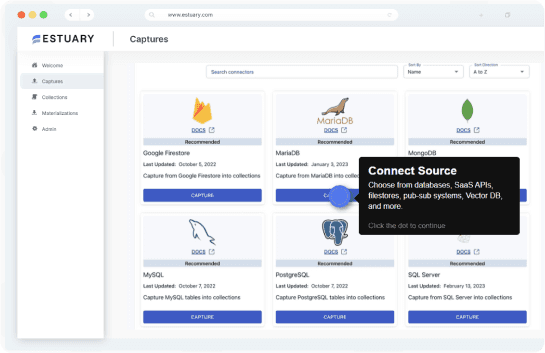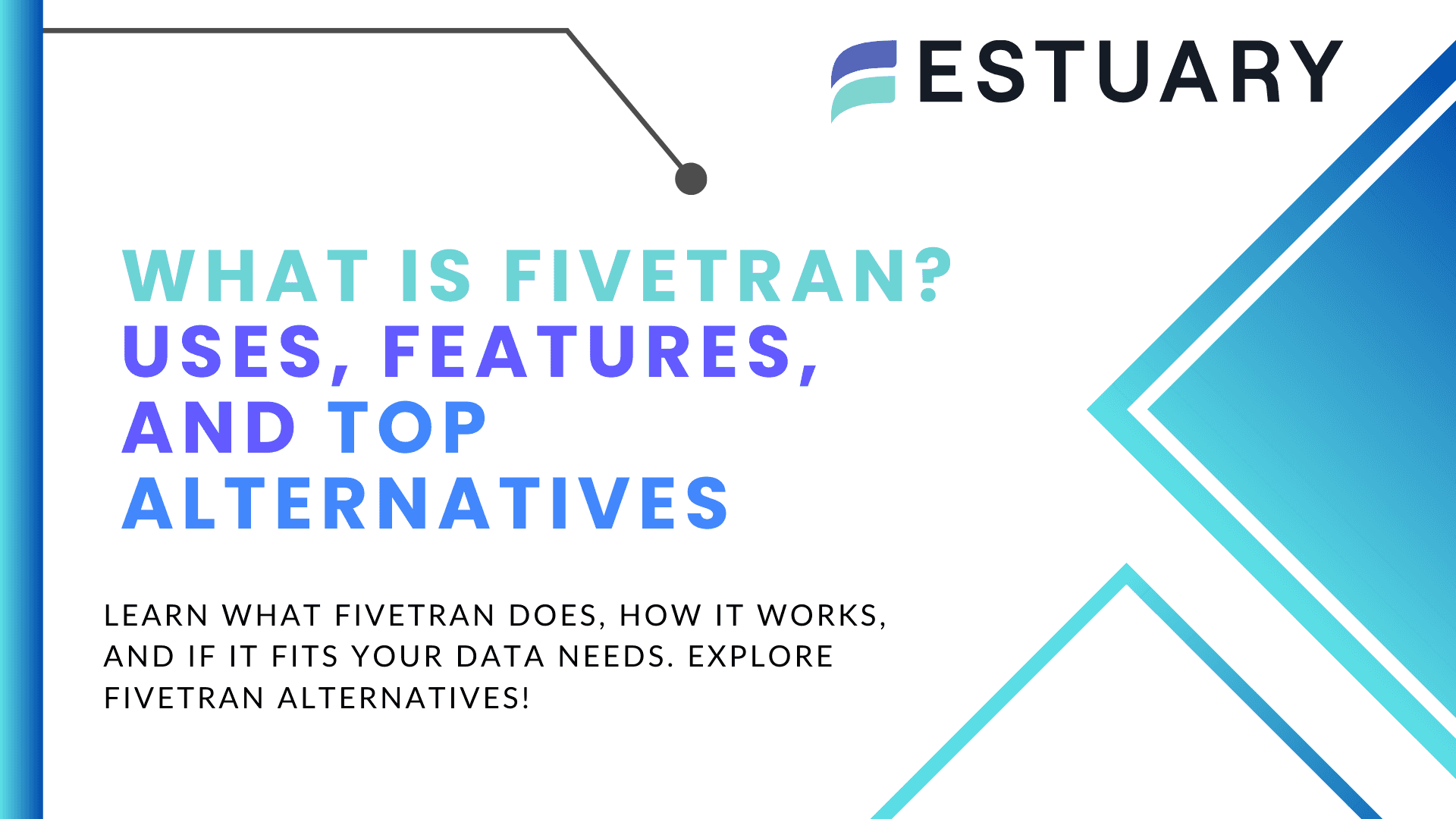
Many data teams eventually reach a point where their Fivetran setup no longer fits the direction of their data stack. Sometimes it’s due to pricing volatility, where Monthly Active Rows grow faster than expected and cost becomes unpredictable. Other times it’s because teams need more flexibility, more control over ingestion logic, schema handling, transformations, or the ability to support near real time use cases. As modern analytical environments evolve, migrations become inevitable.
However, migrating off Fivetran is not a simple switch. Fivetran performs a large amount of automation behind the scenes, and those conveniences mask significant architectural decisions that must be revisited during migration. If you want the process to be reliable, controlled, and free from data inconsistencies, you need a plan that accounts for the parts of the pipeline that Fivetran normally hides from view.
The following guide outlines the essential considerations to keep in mind when migrating away from Fivetran to any alternative platform or system. It is deliberately vendor neutral so you can apply it to any destination, whether that is an in-house ingestion framework, a CDC-based system, a streaming pipeline, or another third party tool.
Key Things to Keep in Mind When You Migrate From Fivetran
1. Start With a Clear Understanding of Your Current Environment
Before touching anything in your pipeline, you need a complete picture of how your organization currently uses Fivetran. This is more than listing connectors; it means deeply understanding how your data flows today and what the system has been abstracting away from you.
Begin by cataloging all the connectors, sources, destinations, schedules, schemas, and any incremental or CDC rules in place. Pay attention to versions, unusual configurations, or filters applied to specific tables. Many teams don’t realize how much logic lives inside Fivetran until they prepare for migration.
Equally important is understanding the scale and behavior of the data itself. Identify which tables receive the most updates, which tend to grow rapidly, and which ones generate large volumes of inserts, deletes, or schema changes. These patterns directly determine how complex the migration will be and what type of ingestion model you will need afterward.
Downstream dependencies matter just as much. Every dashboard, ML feature pipeline, reverse ETL process, or business-critical metric that relies on data from Fivetran must be mapped and accounted for. Any migration that ignores downstream consumers puts the business at risk of unexpected breakages during cutover.
2. Be Honest About What’s Driving the Migration
Knowing why you are moving away from Fivetran is essential because that reason will shape the design of your new pipelines.
Some teams migrate because their costs have become unpredictable. MAR-based billing can increase rapidly when tables change frequently or source systems undergo schema modifications. In other cases, the motivation comes from latency issues, batch syncs simply can’t keep up with operational reporting needs. Some organizations need more control than Fivetran allows, such as the ability to introduce custom transformation logic, enrichments, filters, or routing decisions.
Whatever the motivation, state it clearly. This will help you evaluate whether your next solution actually solves the limitations you face today. Many failed migrations stem from teams re-creating the same constraints under a different tool.
3. Understand How Your New System Will Move Data
This is one of the most overlooked aspects of migration. Fivetran’s ingestion behavior is surprisingly opinionated, and teams often discover that their new solution handles data very differently.
Batch ingestion, log-based CDC, and streaming pipelines all have different guarantees, latency expectations, and operational requirements. Before migration, you should know whether your future system relies on batch queries, event streams, CDC logs, or a hybrid of multiple patterns. Each approach handles updates, deletes, and ordering in unique ways.
For example, some systems preserve strict event order; others do not. Some treat deletes as explicit records, while others rely on fields like “is_deleted” or rely exclusively on primary-key-based merges. Some automatically absorb schema changes; others expect you to version and manage schema evolution yourself.
If you rely heavily on near real-time updates, soft deletes, late-arriving data, or tables with complex change patterns, you need to verify exactly how these scenarios behave in your new architecture. Failing to do so is one of the quickest ways to end up with mismatched datasets after cutover.
4. Use a Parallel or Dual-Run Strategy Instead of a Hard Cutover
A safe, predictable migration is almost never a single-day event. The best approach is to run your existing Fivetran pipelines and your new ingestion pipelines in parallel.
Dual-running allows you to compare results, identify mismatches early, and build confidence before switching any downstream system to the new data source. For many organizations, this period lasts days or weeks depending on complexity.
During this time, you should monitor row counts, data freshness, schema behavior, and any unexpected differences. Cutting over one table or connector at a time allows you to control the blast radius and ensures that you can roll back easily if something goes wrong.
This strategy dramatically reduces the risk of silent failures, missing data, and business disruption.
5. Plan Carefully for Snapshots, Backfills, and CDC Switchover
Initial loads and CDC transitions are frequently the hardest part of any Fivetran migration. These steps require caution and patience.
A full historical backfill may involve enormous tables, wide schemas, or data that changes constantly during extraction. A naive snapshot can take hours or days, so consider strategies such as partitioned extracts, incremental snapshots, or direct database exports when possible.
If your new system uses CDC, you must also decide exactly when and where to start reading from the logs. Choosing the wrong offset can lead to missing events, duplicated updates, or inconsistencies that are difficult to detect later. High-churn tables, like those with frequent updates, deletes, or soft delete patterns—require special attention to avoid discrepancies during the handoff.
Tables without primary keys, or those with composite keys or irregular update patterns, also need careful planning. These require different merge logic than standard CDC flows and may require custom handling.
6. Validate Your Data Thoroughly Before Cutting Over
Even when both systems appear to be working, validation is essential. Successful job execution does not mean the data is correct.
Data validation should occur at multiple layers. Begin by comparing row counts and key metrics between the old and new systems. Look at distributions, null percentages, distinct values, and basic statistical properties. Validate that joins behave identically. Confirm that deletes propagate correctly and that updates appear in the right order.
Beyond technical checks, take time to verify that dashboards and reports reflect consistent values. Differences can signal deeper issues in how each system interprets changes or handles schema evolution.
Where possible, automate these comparisons. If you’re migrating dozens of tables, automation will save time and provide consistency.
7. Understand How Schema Changes Will Work After Migration
Fivetran handles many schema changes automatically—adding new columns, adjusting types, and updating downstream tables without manual intervention. When you move away from Fivetran, the behavior of schema evolution may be very different.
You need to know whether your new system will automatically adjust to schema drift or whether you must explicitly approve changes. Some systems will fail when unexpected columns appear, while others quietly drop or ignore them. Some treat type changes as schema violations, while others convert everything to strings.
Pay attention to how nested JSON fields, arrays, or semi-structured types are handled. These formats behave inconsistently across platforms, and mismatches in parsing logic often create subtle downstream data quality issues.
Getting schema evolution right isn’t just a migration concern—it will determine the long-term maintainability of your pipelines.
8. Prepare for the Operational Responsibilities After Migration
Leaving Fivetran gives you more control, but it also means you now own more of the operational surface area. Your future environment needs strong observability, monitoring, and alerting.
Set up mechanisms to track pipeline failures, sync delays, CDC lag, schema drift, unexpected volume changes, or data anomalies. Clear runbooks should describe how to handle failures, re-run backfills, restart pipelines, rotate credentials, and respond to schema changes.
Long-term operational maturity includes lifecycle management. Consider how you will handle storage growth, partition pruning, archival strategies, or performance tuning as your datasets evolve. Many teams treat migration as a one-time event, but the real work begins afterward, when maintenance becomes part of your regular pipeline operations.
9. Have a Final Validation Checklist Before You Turn Anything Off
Before you disable any Fivetran connector, walk through a detailed final review. Ensure your historical backfills are complete, that CDC transitions are consistent, and that no gaps or duplicates exist. Validate dashboard outputs, BI joins, and row-level correctness for critical datasets. Review your monitoring setup and confirm your team is prepared to support the new pipelines going forward.
Once everything checks out, you can proceed with confidence.
Conclusion
Migrating from Fivetran is ultimately about taking control of your data movement strategy. Whether you are optimizing costs, improving latency, adopting CDC-based patterns, or increasing your ability to customize pipeline behavior, a successful migration requires a deep understanding of your existing environment and careful planning at every stage.
Inventorying your setup, evaluating your data movement patterns, validating your pipelines, and preparing for long-term operational ownership are all essential steps. When done correctly, migration not only replaces a tool, it improves your entire data architecture and sets you up for more predictable, flexible, and reliable workflows in the future.
For a hands-on example of what a migration process looks like in practice, you can explore our separate migration walkthrough guide.
If you want to see an example of what a modern migration workflow looks like, you can explore our step-by-step Fivetran to Estuary migration guide.
FAQs
What is the biggest risk when migrating from Fivetran?
How do I avoid missing data during a Fivetran migration?
What should I watch for when handling schema changes without Fivetran?

About the author
Team Estuary is a group of engineers, product experts, and data strategists building the future of real-time and batch data integration. We write to share technical insights, industry trends, and practical guides.















